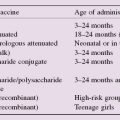Autoimmunity represents the failure of self-tolerance. Before proceeding, the reader is recommended to glance back at Fig. 22, which summarizes the mechanisms by which the immune system normally safeguards its lymphocytes against self-reactivity. This is essentially a problem for the adaptive immune system, since both B and T cells generate their antigen-binding receptors by random gene rearrangement (see Figs 12 and 13) and receptors recognizing self antigens are bound to be generated in the process.
The main mechanisms by which these are prevented from causing harm are shown in Fig. 22. The figure above highlights some of the points at which they can break down or be induced to fail. These are numerous, but two influences are particularly significant: genetics and infection. Identical twins show concordance rates around 30% for many autoimmune diseases (concordance is the frequency of disease in one twin occurring in the other). The association of autoimmune diseases with individual HLA genes, especially class II, implies a crucial role for CD4+ T cells, although the association is fairly weak (relative risk 4–14; relative risk is the chance of developing the disease compared with people without the gene) except for ankylosing spondylitis, where the very strong link (over 90) is with a class I gene, B 27. The role of infection in autoimmunity is suggestive but seldom clear-cut: autoimmune disease frequently follows infection, but no autoimmune disease has yet been convincingly shown to be due to a specific pathogen. The killing of virus-infected cells by cytotoxic T cells could be regarded as an exception, but here the autodestruction is a beneficial part of recovery, although it may cause excessive damage, e.g. hepatitis B and the myocarditis of coxsackie virus infection.
It is important to realize that autoimmunity (centre of figure) does not necessarily mean autoimmune disease (right), the latter term being restricted to conditions where there is reasonable evidence that the symptoms are in fact due to autoantibodies and/or autoreactive T cells (see opposite page). The finding of autoantibodies in the absence of obvious disease, or even in healthy people, emphasizes the fact that the precise aetiology of most autoimmune diseases is still not fully understood.
Self-Tolerance and Self-Reactivity
Tolerance
The mechanisms responsible for making sure that lymphocytes do not generally react to self antigens (self-tolerance) are explored in Fig. 22. However, in some cases tolerance is not complete. This can result from incomplete clonal deletion, or a breakdown in peripheral tolerance. Deficiency in the TREG subpopulation has been reported in several autoimmune diseases, including diabetes, rheumatoid arthritis and SLE. Expression of class II MHC antigens on thyroid epithelial cells, or pancreatic beta cells, perhaps as a result of infection, may also contribute to breakdown of tolerance. Sometimes, tissue injury or infection can allow antigens that are usually screened from the immune system (e.g. in the eye) to become accessible.
Macrophages
Stay updated, free articles. Join our Telegram channel

Full access? Get Clinical Tree




